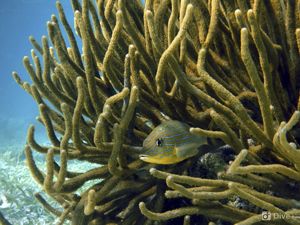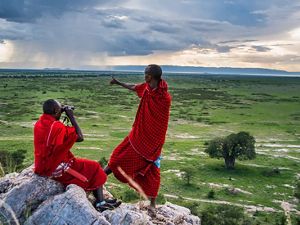Philanthropists must not turn their back on the planet now
By Marianne Kleiberg Regional Managing Director for Europe , The Nature Conservancy
Up to one million species are now threatened with extinction, marking a rapid and serious decline in the health of the ecosystems we all depend on to survive and thrive. This loss is deeply concerning, as ecosystems also play a vital role in regulating the climate.
Despite this, nature conservation is still only the fifth biggest area for philanthropic giving, with climate change following closely behind. This is on the rise, but we are still falling well short of filling the $700 billion annual financing gap for nature.
In a recent interview with Alliance, philanthropist André Hoffmann shared his views on the limitations of philanthropy. While I agree with many of his points and strongly echo his call for businesses to create more value, I believe that in this planetary emergency we need more – not less – philanthropic giving, and we need it more urgently than ever before.
I also believe philanthropy is an enabler for the very systems change that Hoffmann and others are calling for.
Philanthropy as a catalyst
At The Nature Conservancy (TNC) we’re increasingly finding that philanthropy can be the catalyst for unlocking additional funding for projects: giving reassurance to larger funders such as private investors and governments, which brings new partners and collaborators on board.
This is the thinking behind Enduring Earth, an ambitious collaboration among TNC, The Pew Charitable Trusts, World Wildlife Fund and ZOMALAB, that works alongside nations and communities to accelerate conservation worldwide and support community economic development.
Enduring Earth aims to conserve an area of oceans, land and freshwater nearly twice the size of India. Through this initiative, TNC works in collaboration with WWF, The Pew Charitable Trusts, and ZOMALAB – using a model known as project finance for permanence (PFP) – also referred to as a PFP, which secures long-term investment in conservation initiatives by tying sustained funding to tangible, measurable goals encompassing both social and environmental benefits.
This model is critical to our success and we are pleased to have recently attracted what we believe to be the single largest environmental donation ever from a European foundation: $40 million from The Hans Wilsdorf Foundation. To date, partners have conserved more than 120 million hectares, with plans to mobilise nearly $4 billion in new funding to protect an additional half a billion hectares by the end of the decade.
Philanthropy as an enabler
Philanthropy can also empower and finance Indigenous groups, who are the stewards of 80 percent of the world's biodiversity, like in Canada’s Great Bear Rainforest. Starting in 2006, TNC supported an effort to secure durable funding for Indigenous stewardship of the forest. This initiative led to an innovative finance agreement among First Nations, British Columbia, Canada, and private funders; and to the creation of Coast Funds, an Indigenous-led conservation finance institution, to manage CAD$120 million for conservation and economic development.
First Nations have leveraged this funding to create more than 100 new businesses, as well as conserving critical habitats for spirit bears, salmon, and centuries-old cedars. This project has since become recognized as the world’s first example of the project finance for permanence (PFP) model, which is now widely deployed by Enduring Earth. Building on this success, First Nations are now developing a Great Bear Sea PFP to fund sustainable management and habitat protection over an area of ocean larger than Maine.
Philanthropy to fill hard-to-plug gaps
Philanthropy can also bridge many funding gaps that traditional financing sources simply cannot. One example is the refinancing of debt through TNC’s Nature Bonds program. Nature Bonds projects benefit people and nature, providing national governments with significant financial savings from debt refinancing in support of conservation and climate commitments that also allow local communities to preserve their livelihoods and traditional ways of living.
Philanthropic support for staff time to conduct the initial conservation planning and execution of a debt conversion can unlock huge sums of funding, often more than 40 times the original amount given.
For instance, the Barbados Blue Bond project, which launched last September in collaboration with the Inter-American Development Bank, unlocked $50 million to help Barbados protect up to 30% of its marine ecosystems, improve management for all marine waters within its jurisdiction, and develop a sustainable blue economy plan. The philanthropic support that allowed TNC to conduct the transaction and facilitate the marine planning made this timely achievement possible.
The journey ahead
I’d like to thank André Hoffmann for initiating this conversation on the role of philanthropy. It is clear from the initiatives mentioned here, in his interview, and in the many stories collected by the Environmental Funders Network, that philanthropic funding has made possible projects with substantial, tangible benefits for the planet. This shows that it is not a matter of philanthropy versus systems change, but rather about evolving the role of philanthropy to enable systems change through more sustainable financing models.
He is right to say that “philanthropy alone [can’t] change the issues we are addressing,” but we must continue to champion this vital and valuable form of finance as we push to close the biodiversity finance gap and protect our planet’s future.
Originally Posted on Alliance Magazine
September 11, 2023



